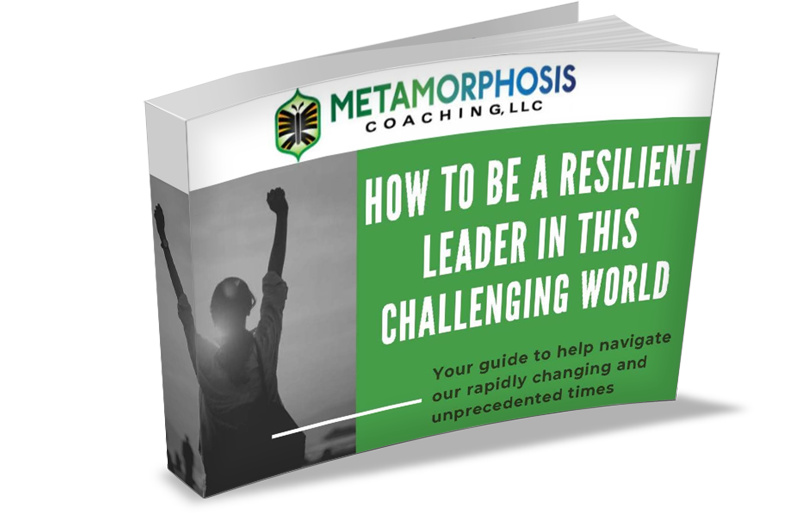How to Repair Quiet Quitting and the Great Resignation in the Workplace

Competition is keener than ever for organizations to remain relevant, grow, and thrive. The average age of a company on the Fortune 500 is a little more than 14 years old. By 2027 companies will only average 12 years on the Fortune 500 before dropping off. In comparison, the 1964 average was 33 years! Certainly, there’s an opportunity to reverse this trend. Part of the reversal is to stop the bleeding from rampant attrition, which negatively impacts innovation and can, ultimately, lead to the demise of an organization.
We’ve learned that fallout from the pandemic requires businesses to innovate their operations and how they regard their employees. The response from many organizations has been to focus more on the operations side of the business to address challenges like supply chain issues. But the other half of the equation is to double down on their regard for employees to retain and attract top talent. The ongoing headlines incorporating terms like the Great Resignation, great attrition, and quiet quitting all point to the necessity to reinvent the ways employees are incentivized and compensated. Herein lies the opportunity that many organizations have missed, and the good news is it’s not too late to course correct!
A recent search on the job-hunting platform Indeed.com revealed more than 6400 openings for mid to senior-level leaders proficient in EI. The challenge is that many managers and leaders who are proficient in technical knowledge or are considered subject matter experts (SMEs) get promoted to their level of incompetence. We call this phenomenon the “Peter Principle,” demonstrating how IQ and intellect take leaders only so far before they plateau or derail.
Managers and leaders who derail are often deficient in the people skills that will help them relate to their team, persuade, influence and be the type of leader that others want to be around. Some organizations continue to discount the relevance of EI growth and development for myriad reasons, one being the lack of time to invest in their potential top stars. And yet, when the stakes are the highest and the investment can help stop the bleeding of employees, how can there be any argument against EI development?
“In the long run, EQ (emotional quotient) trumps IQ (intelligence quotient). Without being a source of energy for others, very little can be accomplished.” — Satya Nadella, CEO of Microsoft, September 30th, 2014 Chief Executive and Amazon Web Services 294 CEOs believe culture is the most crucial element driving innovation today (August 19, 2021). Dr. Timothy Clark agrees, espousing that the opportunity to create a culture by design instead of default is now. Much of his “Four Stages of Psychological Safety” imply self-awareness, self-regulation, empathy, and many other skill
areas of emotional intelligence. Many leaders, however, especially those who derail and have a track record of high employee turnover, possess an unconscious incompetence about EI; they lack insight into how EI can positively
impact their influence and organizational performance and productivity while dramatically supercharging their organization’s culture.
There is a dramatic distinction between influencing by inspiration vs. coercing by authority or ranking position. Dr. Tim Clark’s psychological safety is grounded in this same philosophy – modeled top-down by leaders. Supporting results were published in the July 13, 2022, edition of McKinsey Quarterly, emphasizing “it cannot be overstated just how
influential a bad boss can be in causing people to leave. And while in the past, an attractive salary could keep people in a job despite a bad boss, that is much less true now than it was before the pandemic. Our survey shows that
uncaring and uninspiring leaders are a big part of why people leave their jobs, along with a lack of career development. Flexibility, on the other hand, is a top motivator and reason for staying.” Stay tuned for other incentives to consider and the theme of flexibility that exists as an undercurrent.
Organizations that regress or derail are typically led by leaders who don’t seriously regard the ideas and values of their employees. A lack of EI is at the root cause of these leaders’ woes who are not open to considering other viewpoints or don’t relinquish the tethers of control to empower and engage others. They may attribute the problem to a lack of time or that others aren’t stepping up to take the initiative; herein lies the challenge to let go a little and take some risks with a willingness to be wrong and accept others’ viewpoints. No one can whistle a symphony, and this is certainly true of any organization if it is going to innovate and thrive. Without intentional EI development, it is difficult to overrule the way our brains are designed. Leaders and individuals who are not open to or seek other sources of information, including that which is in stark contrast to their own, are just perpetuating the problem. Sadly, many leaders who struggle will suffer because they are too controlling and will miss the red flags due to the time that they waste trying to prove their position.
“S/he doesn’t want to know the other side. S/he wants arguments and statistics for his own side, and nothing more” – Mark Twain.
Profit at all costs and pushing employees to uphold the organizational mission are not sustainable. The May/June 2022 edition of Inc magazine featured the Best Workplaces of 2022 and how these companies thrived during the pandemic. Innovative organizations included Seer Interactive in Philadelphia, Addigy in Miami, and Front in San Francisco.
Each of these organizations and hundreds more shared how investing in their employees reaps huge dividends. Some creative perks include:
• Cash rewards/Stock Options
• Empowering employees to referee meeting productivity
• Compartmentalizing Fridays (no outside intrusions or
meetings)
• Handyman help
• Home office stipend
• Mandatory paid vacation every 6 months
• Paid off time for community service
• Paid paternity leave
• Parenting Coach
• Leadership Coach
• Wellness Coach
• And more!
An underlying theme in these successful organizations is innovation by investing in employees and in Leadership Development. Flexibility is also key. Executive leadership drives the initiative, leading by example in their own growth and development. This innovation drives an intentional culture which has a ripple effect on employee engagement and job satisfaction. It’s never too late to course correct and intentionally invest in your employees to transform your organization’s culture to drive innovation. Investments yield dividends! Which ideas resonate most with you to try in your organization? We’d love to hear what’s working well in your organization.
Special Report:
How to be a Resilient Leader in this Challenging World. PLUS More Free Resources!

Sign up below and get your FREE "How to Be a Resilient Leader in This Challenging World" Report today!
